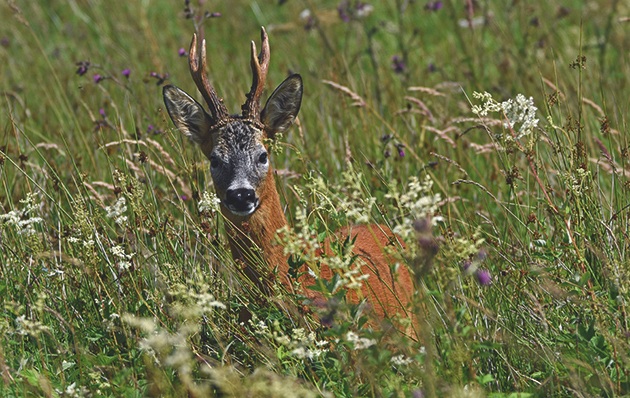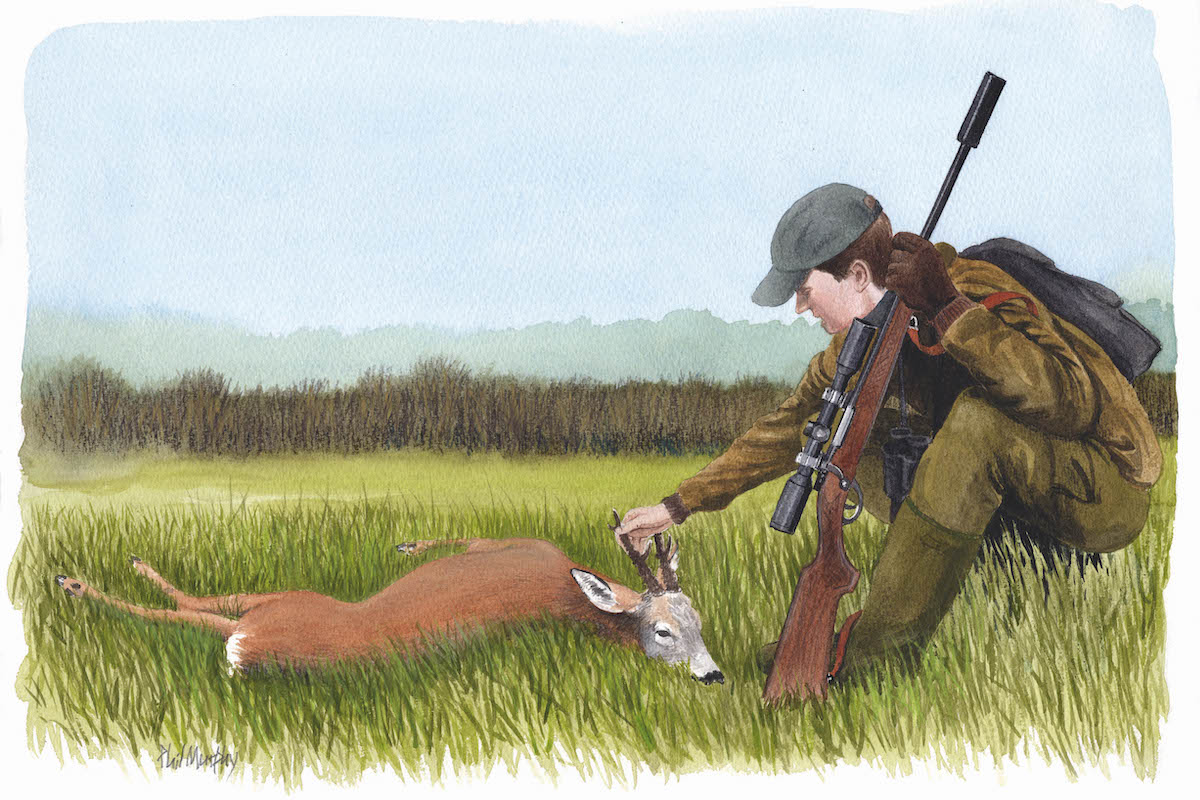2019 Scottish Roe Review
Four gold heads from the same estate that yielded three in 2018 were highlights of the 2019 Scottish roe review, says Iain Watson

In 2018 a Swedish hunter called Jimmy Olsson took three gold-medal roe during his visit. In 2019 on the same estate he and his friend, Manollo Rodriguez, grassed four gold-medal heads between 30 April and 1 May, which scored 174.53, 173.95, 135.68, and 134.1. The largest of the heads was scored at CIC headquarters in Budapest, where it was awarded an international gold medal.
These great triumphs demonstrate what can be achieved by careful management, offering hard-pressed estates a revenue stream while affording roe the status that, as a native species, it deserves.
Calum Campbell, the keeper on the Esslemont estate in Aberdeenshire where the deer were hunted, offered some insight into his management methods. Esslemont is a 4,500-acre estate, of which 750 acres are wooded. The county is renowned for quality roe, helped by good mineral retention in the clay soil and good genetics. Calum arrived in 2003, inheriting a very low stock density of roe, the previous policy being to shoot on sight.
Seasonal gold
Alongside his main role as a pheasant keeper, he decided to let the roe population build up, setting himself a goal to harvest one gold-medal head per season.
In 2006, the estate got its first gold medal and since then has achieved two or three golds per season, culminating in the four from last year. Esslemont had the top-scoring buck from Scotland in 2010 and the top UK animal in 2016. Calum does not shoot young bucks, pointing out that these can and do change, so what might appear as a poor prospect in year one or two might not be so in year three. By year three or four a buck’s potential should be clear.
To put the harvesting of four golds in some perspective, Calum estimates a population on Esslemont of around 120 deer. His doe cull is flexible and based on his knowledge and perception of the overall numbers of resident deer. In some years this could be as high as 40 and in others as low as six. Calum invests a lot of time observing deer and skilfully photographing them, as Facebook users will know. He maintains a network of trail cameras, stressing the benefits of being able to identify individuals of both sexes with no disturbance or harassment. Esslemont provides year-round access to mineral blocks and additionally animals take wheat from the pheasant feeders. However, Calum is convinced that this availability of supplementary feeding is not the main reason why such quality has been produced. He is modest about what he has achieved, explaining that patience and thorough knowledge of the ground and the animals is the real key to success.
In an era where the antis are often aided by pictures of the slain on social media, which they use to our disadvantage, Calum’s abilities extend to taking and posting some glorious images of roe going about their day-to-day lives demonstrating that there is a lot more to knowing deer and managing them than simply pulling the trigger.

This impressive head is top of the medal winners for Mark Paterson scoring 188.13
Top of the table
At 188.13 Mark Paterson’s Aberdeenshire buck leads the UK table for the year. A coalesced head — a rare occurrence when the two beams are fused together as they grow and become one — from Stirlingshire dating back to 2011 scored 134.6 when measured for its buyer Paul Harris.

Brought in by Jon SheardJon Sheard brought in a great talking point from Banffshire to the Highland Field Sports Fair at the beginning of August. It looked a bit like two columns of coral but nonetheless scored, after a hefty deduction, a gold medal at 146.43. Back in the central belt, J Readhead had a gold at 149.38 with a head taken on 19 April.

J Readhead’s gold-medal winner scored 149.38 points

Wouter Stoeffs trophy taken late in the rut scored 162.75
Wouter Stoefs’s trophy taken late in the rut scored an impressive 162.75, and was noted for its very dark colour and exceptional pearling. While not a particularly big head, it had good weight and volume. Laurie Littlejohn went stalking to celebrate his half-century birthday and managed to cap it with a gold-medal roe.
The aggregated tables for Scotland reveal 264 roe making medals — 70 gold, 85 silver and 109 bronze — and a further 24 were scored but fell below medal class. For the hardcore statisticians, the lowest gold made it by .05 of a point; the highest silver missed a gold by .35 of a point and
the bottom bronze got there by .04
of a point.
A Houston’s head from Argyll, scoring 143.95, is an unusual addition to the table. As stalking efforts have increased, medal-level heads have emerged in parts of Scotland unimagined in past decades. It seems that the continued rise in urban roe will bring quality animals from unlikely settings.
The full list of heads can be checked on and the Trophy Evaluation Board’s (TEB) website.
As with all technology there have been some glitches with the main international recording database over the past few months. If you can’t find your details please get in touch via the TEB website.
As the new season approaches, I wonder if we might look back on 2020 and see it as a watershed in our fortunes, not only for roe but for all of Scotland’s deer.
Following the publication of the Scottish government’s latest deer review (News, 5 February) and its proposals for the way that deer are managed in the north, as I write we are two weeks away from the close of Defra’s consultation on the import and export of hunting trophies. This has implications for those of us who hunt, for the long-term conservation of the species we stalk and, critically, for the ecological and environmental space our deer occupy.
Perhaps our political elite should reflect that not only is the roe one of our most beautiful large land mammals, but it is also indigenous and has survived unassisted for centuries through climate change, industrialisation, altered land usage patterns and at times aggressive management, all without the interference of the newly self-appointed moral guardians of wildlife and our rural environment.
Full species results
Moving forward
Scottish stalkers may be aware of the untimely death of Dave Lumsden, a stalwart of the measuring scene. His technical skill as a measurer and knowledge of roe will be greatly missed.
Brian Lile and Sam Thomson have left the measuring team, while Colin Johnston and Laurie Littlejohn have joined.
In this coming season we will have scoring teams at both the Scone Fair and at Moy. We will be on the Scottish Gamekeepers Association stand. If you can’t wait, contact your nearest CIC judge or drop off your trophy to Bushwear at Stirling or Perth. Enjoy your stalking in 2020.










